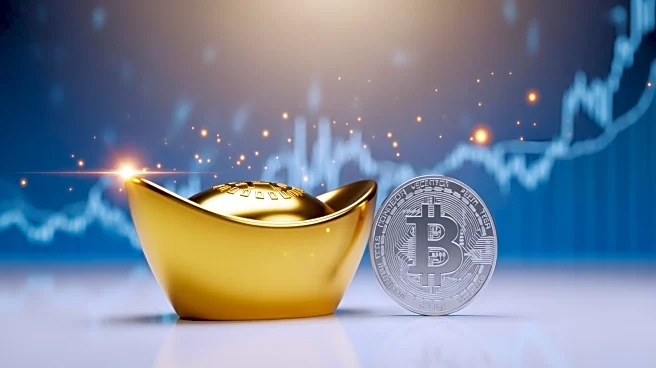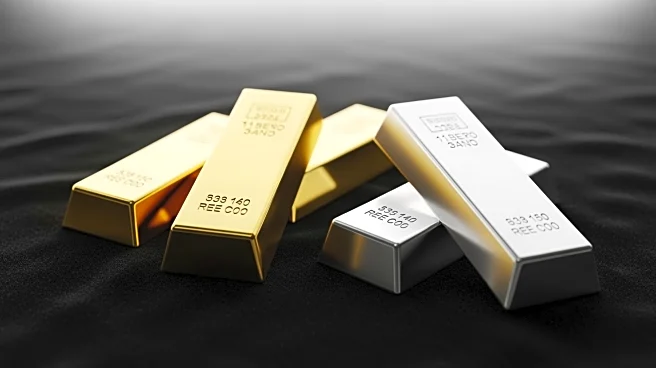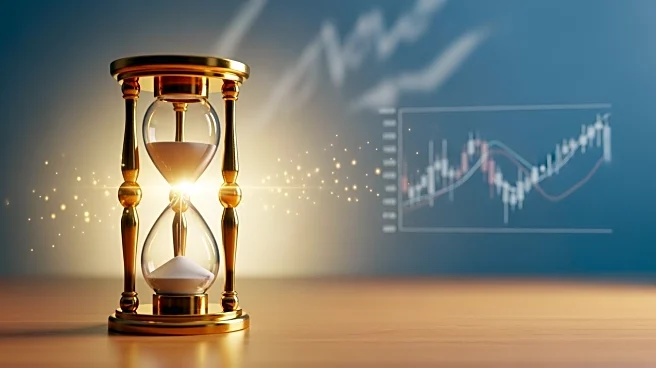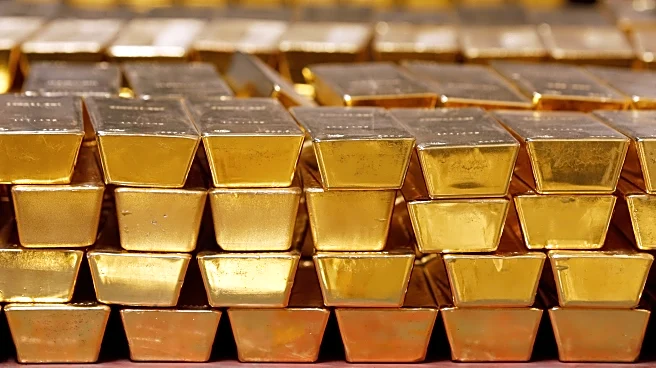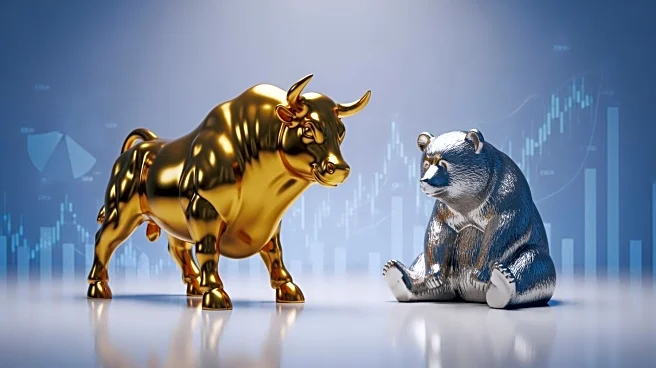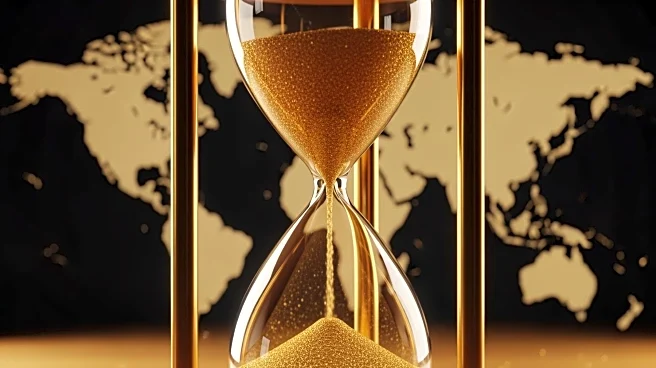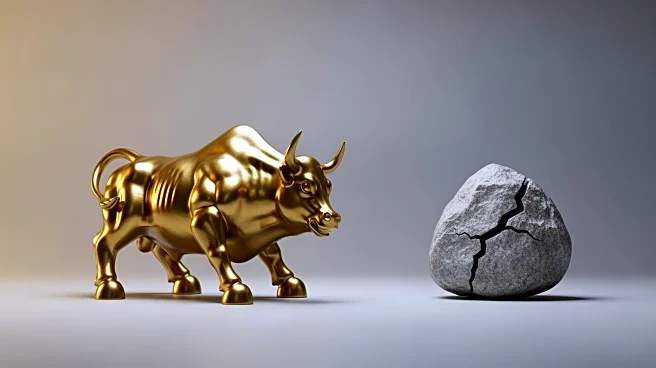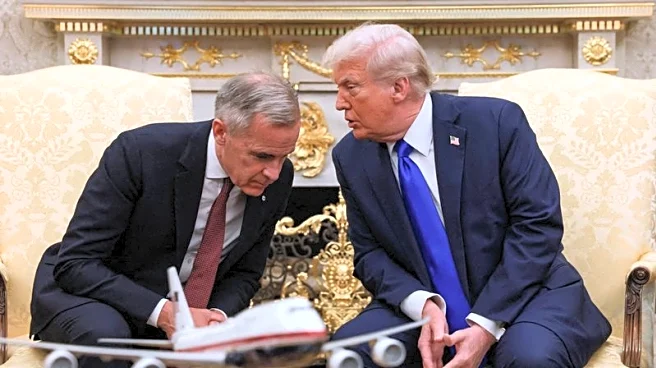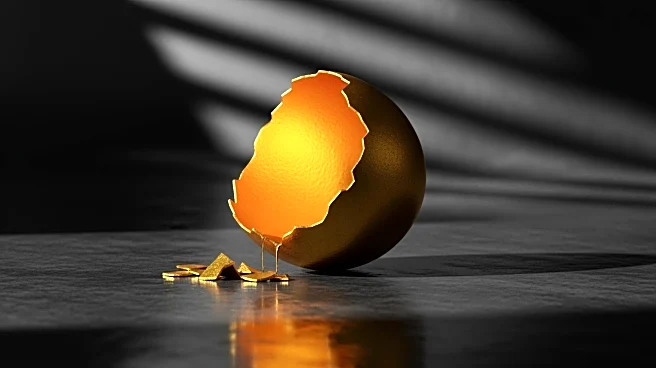What's Happening?
Gold prices have surged to approximately $4,118 per ounce, nearing an all-time high, while silver prices have reached about $48.7 per ounce. This increase follows a volatile week where both metals experienced
significant drops on October 21, with gold falling by 6.3% and silver by 8.7%. The market is currently anticipating a potential rate cut by the Federal Reserve, expected in early November, which has contributed to the increased demand for these precious metals. Central banks worldwide continue to purchase gold, further supporting the price surge. The VanEck Gold Miners ETF has seen a significant rise, up approximately 123% year-to-date, indicating strong performance in the precious metals sector.
Why It's Important?
The rise in gold and silver prices highlights the market's response to economic uncertainties and expectations of monetary policy changes. A potential rate cut by the Federal Reserve could lower real yields, making non-yielding assets like gold more attractive to investors. This trend benefits gold mining companies and ETFs, which have seen substantial gains. The increased demand for safe-haven assets reflects investor concerns over geopolitical tensions and economic instability, such as U.S.-China trade conflicts and a partial U.S. government shutdown. The precious metals market's strength contrasts with the broader stock market, which has remained flat or declined in 2025.
What's Next?
Investors and analysts will closely monitor upcoming U.S. employment data and the Federal Reserve's next meeting for further indications of monetary policy direction. While the current environment supports high precious metal prices, some analysts caution about potential short-term corrections. However, the overall outlook remains bullish, with major banks raising their price targets for gold and silver. Continued central bank purchases and investor diversification are expected to sustain demand for these metals, potentially driving prices even higher in the coming months.
Beyond the Headlines
The current rally in gold and silver prices underscores deeper economic imbalances and the role of precious metals as indicators of financial stability. As central banks continue to stockpile gold, the metals' status as essential assets in uncertain monetary environments is reinforced. This trend may lead to long-term shifts in investment strategies, with more capital flowing into precious metals as a hedge against inflation and economic volatility.
